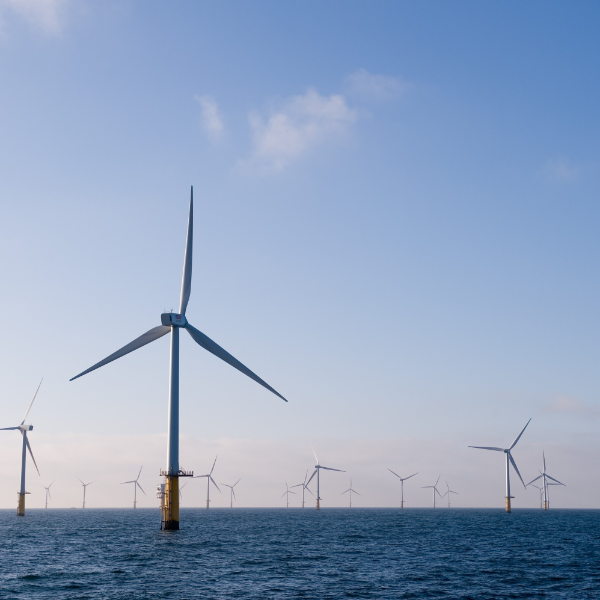Exploratory study of VAWOZ
What are the promising landing sites for wind energy?

Exploratory study of VAWOZ
The Ministry of Economic Affairs and Climate Policy (EZK) has launched the Offshore Wind Energy Landing Connections Programme (VAWOZ) 2031-2040. This programme examines how we can bring wind energy on land in the Netherlands between 2031 and 2040 and connect it to the high-voltage grid. With the important condition of the least possible impact on people and nature. In this programme, Witteveen+Bos carried out the preliminary exploration of VAWOZ 2030, thus investigating the chances of landing sites.
To achieve the climate targets, more offshore wind farms will need to be built up until 2030 than just those stipulated in the wind energy areas set out in the Roadmap 2030. The Climate Agreement sets a target of a 49 % reduction in carbon emissions from 1990 levels by 2030. This will require 11.5 GW of offshore wind energy.
More offshore wind needed
This target has been further tightened by the European Union to a 55 % reduction in carbon emissions compared to 1990, requiring even more offshore wind energy. This is the reason for the Exploration of Offshore Wind Energy Landing (VAWOZ) 2030.
Offshore Wind Energy Landing Connections 2031-2040 examines how, for the period 2031-2040, energy from offshore wind farms (yet to be built) can be brought ashore in the form of electricity or hydrogen. The Ministry of Economic Affairs and Climate Policy is looking for the most suitable locations.
On behalf of EZK, Witteveen+Bos carried out the preliminary exploration VAWOZ 2030 in 2021 and 2022 to understand how energy from the additional wind energy areas can best be brought ashore. This is done by selecting promising alternatives and route variants through a four-step funnel process (see Figure 1).
Multidisciplinary project team
The VAWOZ 2030 examined 40 route variants between designated connection sites and wind energy areas/search areas. This includes potential wind energy areas yet to be designated or areas designated for reaffirmation within the Additional Design Programme North Sea. Depending on the wind energy area/search area investigated, the potential of the various capacities was also studied for the period up to 2030.
All route variants were comprehensively analysed by a multidisciplinary project team with experts in the relevant fields of work. The main themes of environment, technology, cost, future-proofing, system integration and environment formed the foundation for the assessments.
As an extension, we have also prepared a consideration note. This consideration note provides a summary, factual account of the opportunities, interests and concerns involved in the various alternatives for the landing of offshore wind energy.
Traffic light method
To provide overview and insight, we have translated the themes into an impact analysis based on the traffic light method, in which risks are translated into red, orange or green. We did this for the themes of environment, engineering and system integration. No red assessments were given for the themes of cost and future-proofing. The environment theme was provided with a qualitative assessment in which various concerns and risks were raised. The themes of environment, cost and future-proofing were explained in more detail as points of attention.
The environment is an important key theme int he preparation of the VAWOZ 2030 impact study. The extent to which impacts on the environment can be mitigated and/or the impacts affect decision-making has been explained in an environmental assessment framework. Our experts worked along the following distinctive environmental aspects:
- nature
- hydrodynamics and morphology
- shipping
- landscape
- UNESCO
- geological values
- agriculture.
Follow-up on VAWOZ
This means that for several route variants, impacts on nearby Natura 2000 sites were assessed along potential significant effects such as habitat degradation (excavation), turbidity/sedimentation/erosion, disturbance and electromagnetic fields, and impacts on protected species, among others. By extension, an assessment of whether further research has been requested or if the significant impacts can be mitigated.
Meanwhile, the research results of VAWOZ 2030 have been finalised and published and we are working on PAWOZ, Programme Connection Wind at Sea, which investigates routes for connections from wind farms in the North Sea to Eemshaven. The advice and all studies will be included in the decision to be made by the Ministry of Economic Affairs and Climate Policy on cable routes for landings to be further investigated in spatial procedures.